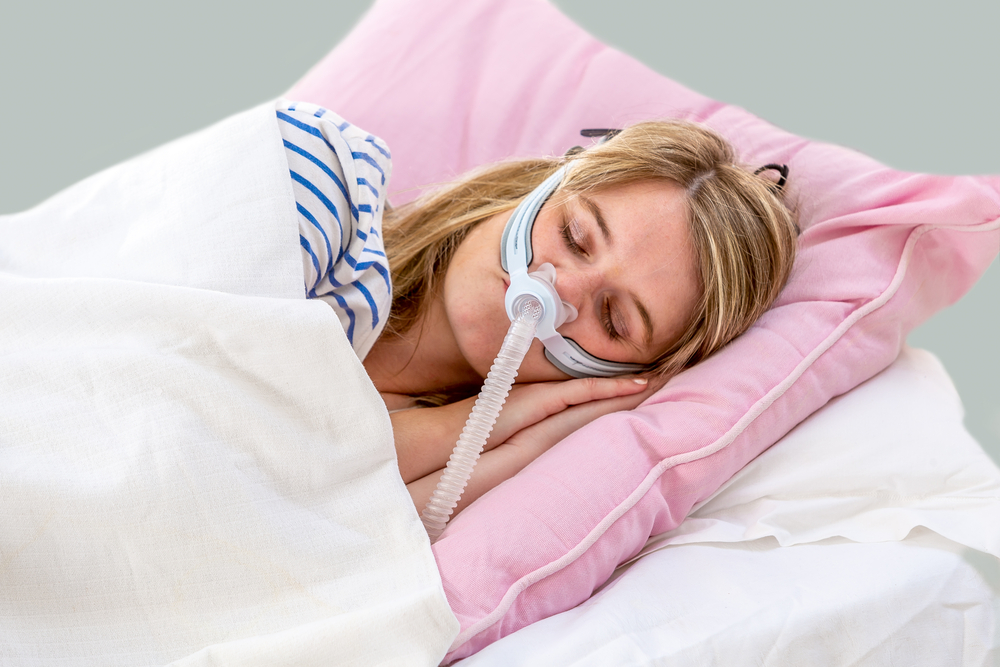
Sleep apnea is a common yet underdiagnosed sleep disorder that affects millions globally. Characterized by repeated interruptions in breathing during sleep, it can significantly impact your physical and mental health. There are three main types:
- Obstructive Sleep Apnea (OSA): The most common type, caused by throat muscles relaxing excessively.
- Central Sleep Apnea: Stemming from the brain’s failure to send proper signals to the muscles controlling breathing.
- Complex Sleep Apnea Syndrome: A combination of OSA and central sleep apnea.
Recognizing and addressing sleep apnea is essential for maintaining a high quality of life.
Symptoms of Sleep Apnea: Know the Signs
Sleep apnea often goes unnoticed, as it occurs during sleep. Common symptoms include:
- Loud, persistent snoring
- Episodes of breathing cessation during sleep (often reported by a partner)
- Gasping for air or choking during sleep
- Morning headaches
- Daytime fatigue and drowsiness
- Difficulty concentrating or memory issues
- Mood changes, including irritability or depression
If these symptoms resonate, seeking a medical evaluation is crucial for diagnosis and treatment.
Causes and Risk Factors of Sleep Apnea
Understanding the causes and risk factors of sleep apnea can empower individuals to manage or prevent it. Key contributors include:
- Anatomy and Genetics:
- Narrow airways or enlarged tonsils/adenoids
- Family history of sleep apnea
- Lifestyle Factors:
- Obesity: Excess weight can lead to fat deposits around the airway.
- Alcohol consumption: Relaxes throat muscles, worsening apnea.
- Medical Conditions:
- Hypertension, type 2 diabetes, or chronic nasal congestion
- Hormonal disorders like hypothyroidism
- Age and Gender:
- Men and older adults are at a higher risk.
Diagnosis: The First Step Toward Better Sleep
Diagnosing sleep apnea requires professional evaluation. The process typically involves:
- Medical History: Discussing symptoms and family history with a doctor.
- Physical Examination: Checking the throat, mouth, and nasal passages.
- Sleep Studies:
- Polysomnography (PSG): A comprehensive overnight sleep test in a lab.
- Home Sleep Apnea Test (HSAT): A simplified, at-home alternative.
Early diagnosis can prevent complications like cardiovascular diseases, stroke, and chronic fatigue.
Treatment Options for Living with Sleep Apnea
Living with sleep apnea doesn’t mean compromising on life’s joys. A variety of treatments are available to alleviate symptoms and improve sleep quality:
1. Lifestyle Modifications
- Weight Management: Losing weight can significantly reduce apnea severity.
- Exercise: Strengthens respiratory muscles and promotes better sleep.
- Sleep Positioning: Sleeping on your side can prevent airway obstruction.
- Avoiding Alcohol and Sedatives: Minimizes muscle relaxation in the throat.
2. Continuous Positive Airway Pressure (CPAP) Therapy
- A CPAP machine delivers steady air pressure to keep the airway open.
- While some find it uncomfortable initially, CPAP is highly effective with consistent use.
3. Oral Appliances
- Custom-fitted devices reposition the jaw or tongue to maintain airflow.
- Ideal for those with mild to moderate sleep apnea or CPAP intolerance.
4. Surgical Interventions
- For severe cases, procedures like Uvulopalatopharyngoplasty (UPPP) or jaw repositioning can widen the airway.
- Nasal surgeries may address structural issues, improving breathing.
5. Alternative Treatments
- Nasal strips or dilators for mild cases.
- Therapies like myofunctional exercises to strengthen throat muscles.
Coping Mechanisms for Living with Sleep Apnea
Adapting to life with sleep apnea can be challenging, but these strategies can ease the journey:
- Embrace the CPAP Machine: Use humidifiers or mask liners to increase comfort.
- Set a Sleep Routine: Regular sleep patterns promote better rest.
- Communicate with Loved Ones: Educate them about the condition to garner support.
- Join Support Groups: Connect with others who share similar experiences.
The Emotional Impact of Sleep Apnea
Living with sleep apnea isn’t just a physical battle; it can take an emotional toll. Feelings of frustration, isolation, or anxiety about the condition are common. Seeking professional counseling or therapy can help manage the psychological effects and foster resilience.
Long-Term Health Risks of Untreated Sleep Apnea
Ignoring sleep apnea can have serious consequences. It is linked to:
- High blood pressure and heart disease
- Increased risk of stroke
- Type 2 diabetes
- Cognitive decline and memory issues
- Accidents caused by daytime drowsiness
Proactively managing sleep apnea is vital for safeguarding overall health.
The Role of Technology in Sleep Apnea Management
Advancements in technology are transforming how sleep apnea is managed. Innovative solutions include:
- Smart CPAP Machines: Track usage and provide real-time feedback.
- Wearable Devices: Monitor sleep patterns and detect apnea episodes.
- Telemedicine: Enables remote consultations with specialists.
These tools empower individuals to take control of their health with greater precision.
Final Thoughts
Sleep apnea may feel overwhelming, but you’re not alone. Armed with the right knowledge and resources, you can successfully navigate this condition. Take charge of your sleep health today for a brighter, healthier tomorrow.



